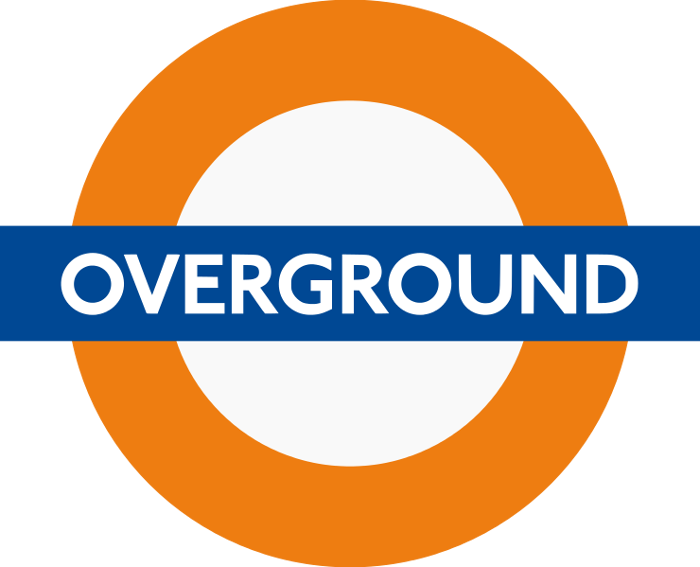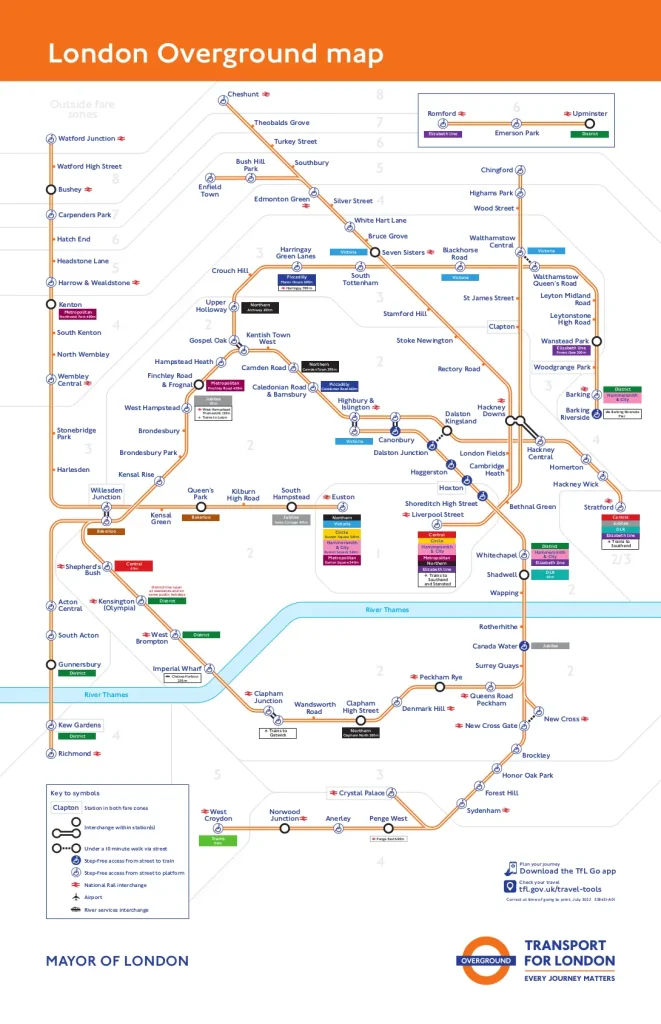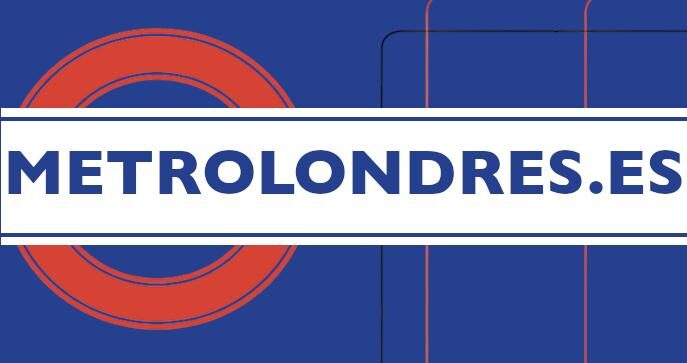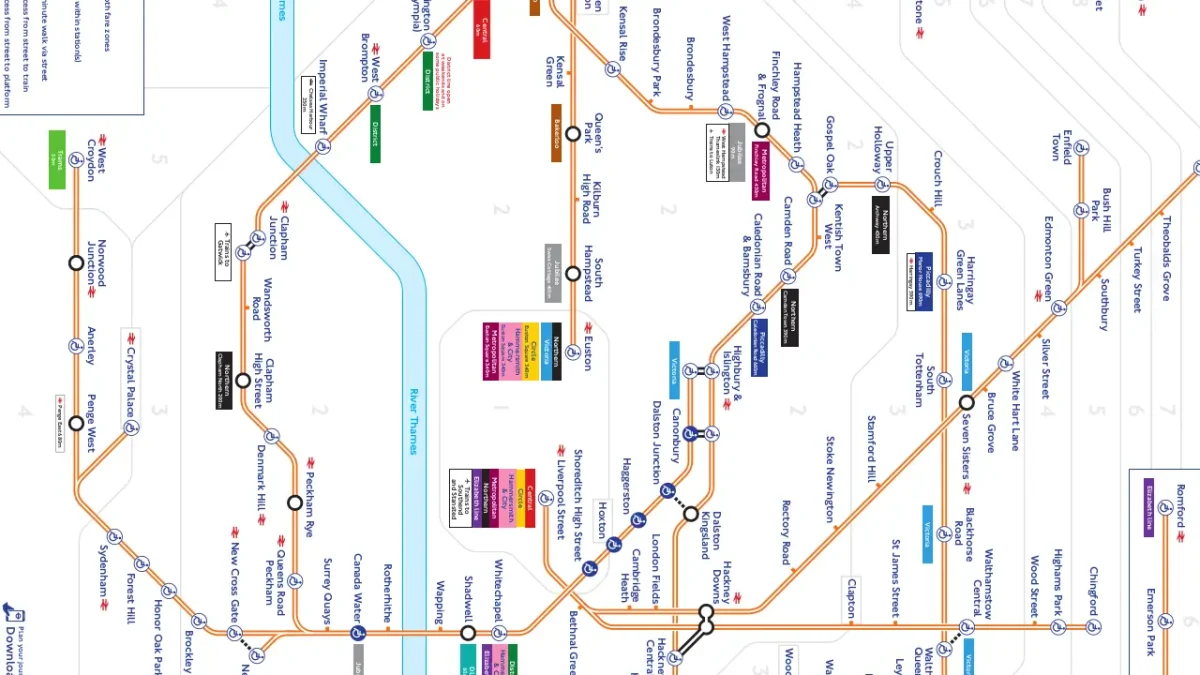London Overground is an urban rail network that has become a key part of London’s public transportation system.
Operated by Transport for London (TfL), this service has grown since its inauguration in 2007, efficiently connecting suburban areas and some central London zones that are not as well served by the Underground. It’s the complementary alternative to the London Underground.
If you’re interested in learning more about this important network, keep reading. Here, we offer you a complete guide to London Overground, from its routes and schedules to its future expansion plans.
Coverage and Routes
London Overground covers a vast area of London, particularly in the outer zones. Its network of routes connects key areas such as Hackney, Camden, Croydon, Stratford, and Shepherd’s Bush, offering a vital link for residents in these areas.
Some of the most important routes include:
- North London Line: From Richmond to Stratford.
- East London Line: From Highbury & Islington to West Croydon or Crystal Palace.
- West London Line: From Clapham Junction to Willesden Junction.
- Gospel Oak to Barking Line.
- Watford DC Line: From Euston to Watford Junction.
- South London Line: From Clapham Junction to Surrey Quays.
Stations and Fare Zones
The Overground has more than 112 stations spread across its various lines. Many of these stations are interconnected with the London Underground, making transfers smooth and travel more seamless.

The system operates within fare zones 1 to 9, providing extensive coverage of the city and its surroundings. This integration with TfL’s standard fare zones means you can use your Oyster card or any contactless card to pay for your journeys.
Schedules and Frequency
The London Overground service is frequent and reliable. Trains usually run every 10 to 15 minutes, depending on the line and the time of day.
Services typically start around 5:00 a.m. and end between 11:30 p.m. and midnight, depending on the line and the day of the week, making it a convenient option for both daily commutes and evening outings.
Additionally, some lines offer night services on weekends, providing a useful alternative for those enjoying London’s nightlife.
Fares and Payment Methods
Overground fares are the same as those on the Underground, making it easy to plan your trips within the TfL network. You can use your Oyster card or any contactless card, and fares are calculated based on the zones you travel through. Fares are divided into peak and off-peak times, with off-peak being more economical.
Interconnection with Other Transport Services
One of the major advantages of London Overground is its excellent interconnection with other transport modes in London. It connects with several Underground lines at key stations, allowing passengers to easily navigate the city. It also links with National Rail, the Docklands Light Railway (DLR), and the Elizabeth Line (Crossrail). In some areas, the Overground is a faster or less crowded alternative to the Underground.
London Overground Map
Updated version available at TfL

Modernization and Expansion
Since its creation, London Overground has undergone continuous expansions and improvements. New lines and stations have been added to enhance connectivity, and TfL has invested in modernizing stations and trains. The trains are modern, equipped with air conditioning, and are accessible for people with reduced mobility, with spaces reserved for wheelchairs. All these improvements have significantly enhanced user experience in terms of comfort and punctuality.
The future of London Overground looks promising, with several expansions planned. These include proposals for new routes and extensions to existing ones, such as integrating the Greenford line to West Ealing. Additionally, new connections with the future High Speed 2 line at Old Oak Common station, scheduled to open around 2025, are being considered.
Popularity and Usage of London Overground
London Overground has gained significant popularity as an efficient and comfortable transport option, especially in areas that previously lacked good transport connections.
It is particularly popular among residents of suburban areas and those who wish to avoid the more crowded Underground lines.
This growth in popularity is largely due to service improvements and network expansion, leading more people to choose the Overground as their main mode of transport.
Interesting Facts about London Overground
The Overground is colloquially known as “The Ginger Line” due to the orange color representing it on TfL maps. Additionally, some stations, such as Shoreditch High Street and Canada Water, have seen a significant increase in demand, driven by the revitalization of surrounding areas.
Whether you need to avoid the crowds of the Underground or want to explore new parts of the city, the Overground is an efficient and comfortable transport option that continues to grow in popularity.

